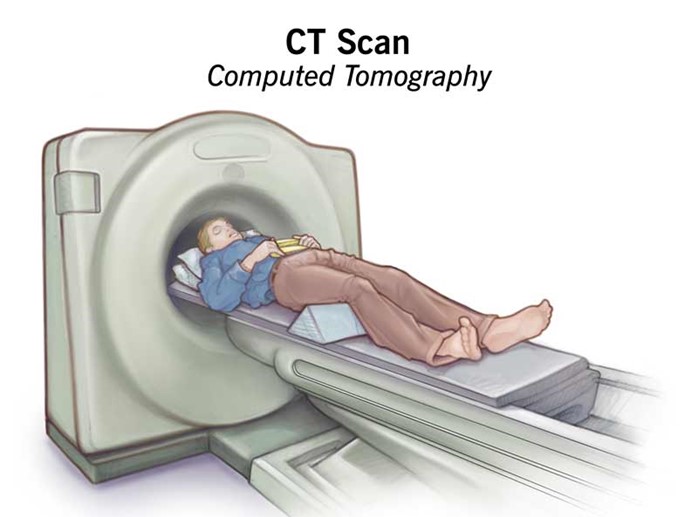A client is being urgently transported to radiology for a Computerized Tomography (CT scan) after a sudden decrease in level of consciousness. The client is orally intubated and has a left lateral chest tube to 20 cm suction. Which action is most important for the nurse to take?
Secure chest tube to the stretcher for transport.
Administer PRN pain medication prior to transport.
Mark the amount of chest drainage on the container.
Keep chest tube container below the site of insertion.
The Correct Answer is D
Choice A: Securing chest tube to the stretcher for transport is a good practice, but it is not the most important action. The chest tube should be secured to prevent accidental dislodgement or kinking, but it does not affect the function of the chest tube or the drainage system.
Choice B: Administering PRN pain medication prior to transport is a compassionate action, but it is not the most important action. The client may experience pain due to the chest tube, the intubation, or the underlying condition, but pain relief is not a priority over maintaining adequate ventilation and drainage.
Choice C: Marking the amount of chest drainage on the container is a useful action, but it is not the most important action. The amount of chest drainage should be recorded and reported to monitor the client's status and detect any complications, such as hemorrhage or infection, but it does not affect the immediate function of the chest tube or the drainage system.
Choice D: Keeping the chest tube container below the site of insertion is the most important action for the nurse to take. The chest tube container should be kept below the level of the client's chest to maintain a gravity-dependent pressure gradient that allows air and fluid to drain from the pleural space. If the container is raised above the site of insertion, it can cause backflow of air or fluid into the pleural space, which can compromise ventilation and cause tension pneumothorax.

Nursing Test Bank
Naxlex Comprehensive Predictor Exams
Related Questions
Correct Answer is ["A","E"]
Explanation
Choice A reason: Consuming foods with saturated fats can increase the level of low-density lipoprotein (LDL) cholesterol in the blood, which can contribute to plaque formation and narrowing of the coronary arteries.
Choice B reason: Walking 30 minutes per day can help lower blood pressure, improve blood circulation, and reduce the risk of heart attack and stroke.
Choice C reason: Using a salt substitute can help lower sodium intake, which can reduce fluid retention and lower blood pressure.
Choice D reason: Keeping a food diary can help the client monitor their calorie intake, portion size, and nutritional balance.
Choice E reason: Eating more canned vegetables can increase sodium intake, which can worsen fluid retention and blood pressure. Fresh or frozen vegetables are preferable.
Choice F reason: Including oatmeal for breakfast can provide soluble fiber, which can lower LDL cholesterol and prevent plaque formation in the coronary arteries.
Correct Answer is D
Explanation
Choice A: Mark an outline of the 'olive-shaped' mass in the right epigastric area. This is not a priority action, as it does not address the immediate needs of the infant. The 'olive-shaped' mass is a sign of pyloric stenosis, but it does not affect the infant's hydration or nutrition.
Choice B: Instruct parents regarding care of the incisional area. This is an important action, but not a priority before surgery. The parents need to know how to care for the incisional area after surgery, but this can be done later.
Choice C: Monitor amount of intake and infant's response to feedings. This is a relevant action, but not a priority before surgery. The infant with pyloric stenosis may have vomiting, dehydration, and electrolyte imbalance due to gastric outlet obstruction. Monitoring intake and output can help assess the severity of these problems, but it does not correct them.
Choice D: Initiate a continuous infusion of IV fluids per prescription. This is the priority action before surgery, as it can prevent or treat dehydration and electrolyte imbalance in the infant. IV fluids can also help maintain blood volume and perfusion during surgery.
Whether you are a student looking to ace your exams or a practicing nurse seeking to enhance your expertise , our nursing education contents will empower you with the confidence and competence to make a difference in the lives of patients and become a respected leader in the healthcare field.
Visit Naxlex, invest in your future and unlock endless possibilities with our unparalleled nursing education contents today
Report Wrong Answer on the Current Question
Do you disagree with the answer? If yes, what is your expected answer? Explain.
Kindly be descriptive with the issue you are facing.
